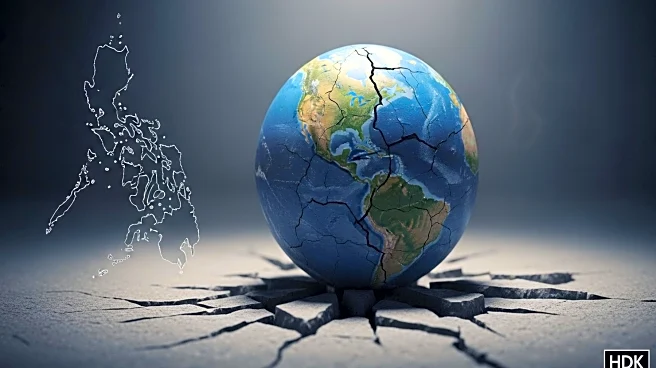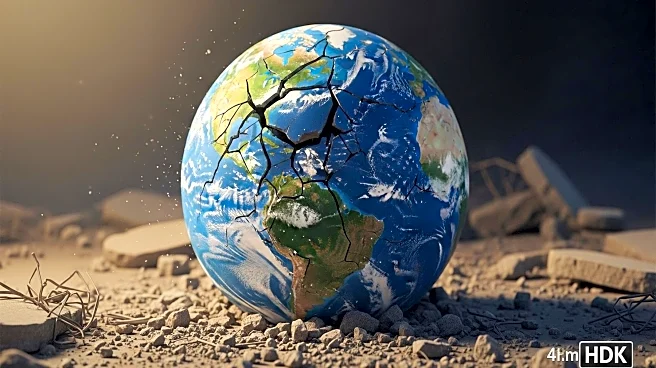What is the story about?
What's Happening?
A powerful 6.9-magnitude earthquake struck the central Philippine province of Cebu, resulting in at least 69 fatalities and numerous injuries. The earthquake caused significant damage to buildings and infrastructure, leading to a declaration of a state of calamity. Thousands of residents spent the night outdoors due to repeated aftershocks, with power and water supplies disrupted. The earthquake follows recent typhoons that have already impacted the region, compounding the challenges faced by local authorities.
Why It's Important?
The earthquake's impact on Cebu highlights the vulnerability of regions frequently affected by natural disasters. The declaration of a state of calamity allows for the mobilization of resources and aid, but also underscores the need for improved infrastructure and disaster preparedness. The event may prompt international humanitarian assistance and could influence future policy decisions regarding disaster management and infrastructure resilience in the Philippines.
What's Next?
Local authorities are prioritizing search and rescue operations, restoring electricity, and delivering relief supplies. The ongoing aftershocks and damaged infrastructure pose challenges to emergency response efforts. The situation may lead to increased calls for international aid and support, as well as discussions on long-term strategies to enhance disaster preparedness and infrastructure resilience in the region.
Beyond the Headlines
The earthquake's impact on communities previously affected by Typhoon Haiyan highlights the long-term challenges faced by disaster-prone areas. The psychological trauma experienced by residents, especially children, may require attention from mental health professionals. The event also raises questions about the adequacy of current building codes and the need for more robust disaster preparedness measures.
AI Generated Content
Do you find this article useful?














